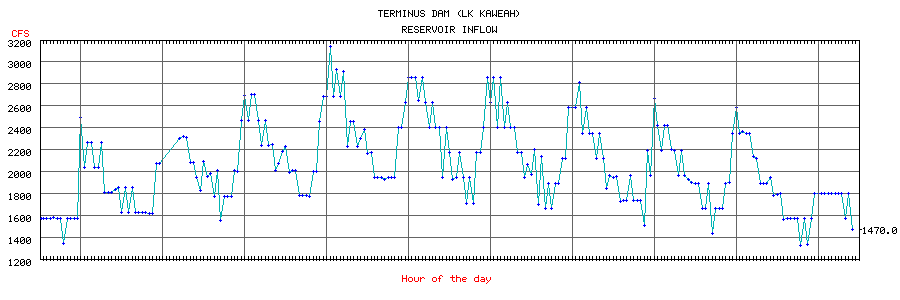
The Kaweah River drainage is extremely short, and as a result, the river rises and falls very fast. During the hot springs days, the snow that is melted during the day reaches the lake in the early morning hours causing a dramatic rise in the flow. This fast rise, slow decay phenomenon is most dramatic during the hotest days with the largest daily temperature swings. It is not uncommon to see a 2 to 1 variation in flow over the course of the day. This results in as much as a 1 foot variation in gauge height at Dinely Bridge. A typical gauge height variation between an early Put In at 8:00 AM and an evening Take Out at 7:00 PM is on the order of 0.4 feet or a 30% flow variation. Take advantage of this variation to maximize the water at low flows or to minimize the danger at high flows.
Note: the noise that appears on the hourly flow graph that comes from Calif. Snow Surveys is a result of the method used to calculate the flow on the Kaweah River. Rather than reading a gauge directly, the Inflow is computed by adding the outflow of the dam to the computed net inflow based on the measured reservoir height (and resultant storage) and adjusted for losses due to calculated evaporation based on temperature, humidity and wind travel. Any bobble in the least significant digits of the reservoir height ends up in calculated flow error. This error is eliminated over the course of a 24 hour measurement. At extremely low flows the percentage error is the highest. This amplified error can be seen when the flows are in the 500 cfs and lower range.
Copyright © 1996 by Bill Pooley. All rights reserved.